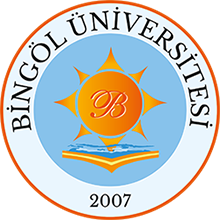Peculiarities of PED virus pathogenesis in neonatal non-immune piglets on Ukraine farms
Tarih
2018Yazar
Masiuk, D. N. and Nedzvetsky, V. S. and Sosnztskyi, I, A. and Kokariev,
V, A. and Zavhorodnii, I, A.
Üst veri
Tüm öğe kaydını gösterÖzet
The article presents the results of study of the immune and tissue
features of pathogenesis of PED virus in neonatal piglets in Ukraine.
Clinical and epizootological analysis was performed in three separate
agricultural enterprises with adverse epidemiological situation with PED
virus. Blood samples and fragments of the small intestine of PEDv
infected piglets were used to study the characteristics of the
pathogenesis of PED virus. It has been determined that the pathogenesis
of super-acute infection by the PED virus in 1-7 day old non-immune
piglets proceeds according to the classic type of infectious process
with a relay transmission of the pathogen. Moreover, diarrhea syndrome
has induced the development of irreversible and lethal
pathophysiological lesions by replication the PED virus in enterocytes
of infected piglets. Pathogenetic changes observed in PEDv infected
piglets were combined with the following components: acute
inflammatory-necrotic process in the tissue of the intestine,
destruction and desquamation of the epithelium of the small intestine.
The infection process on day 3-5 of manifestation of clinical signs of
PED virus is accompanied with an increase in the number of erythrocytes,
leukocytes and monocytes, hemoglobin, hematocrit level and
aminotransferase activity. In addition, PED virus infection induced an
increase in IgM levels and the number of phagocytizing leukocytes with
increased aggressiveness and digestive power. The duration of the
release of PED virus with feces is 26-37 days after cessation of watery
diarrhea. The concentration of PEDv in the feces of convalescent piglets
ranged from 120 to 1700 equivalent genome in 1 g of tissue. Parasite
coenotic associations of the microbiocenosis of the digestive tract of
PED virus infected piglets did not have time to form into stable
epitopes. There was a constant quantitative prevalence of transient
microbiota and a decrease in the share of probiotic microorganisms. The
intestinal microflora consists of random transient microbiota of the
environment with pathogenic properties. The results presented show
evidence that molecular and cell-mediated immunological events in
non-immune piglets have the initial stage of the specific progress of
immune response against PEDv.
Koleksiyonlar

DSpace@BİNGÖL by Bingöl University Institutional Repository is licensed under a Creative Commons Attribution-NonCommercial-NoDerivs 4.0 Unported License..













